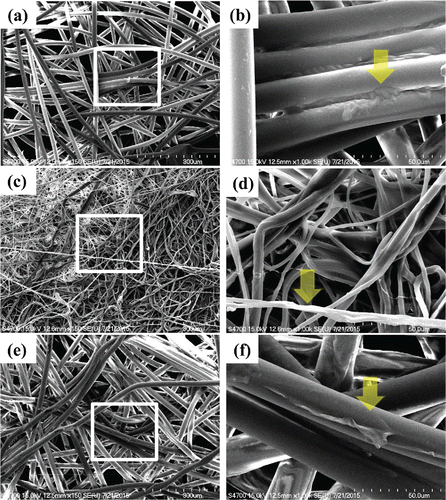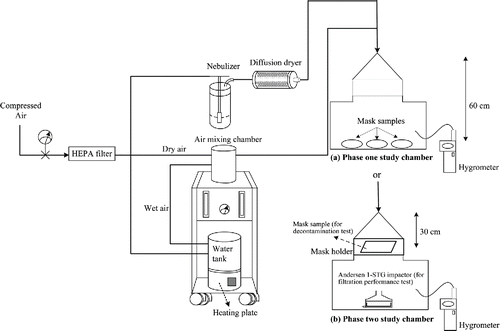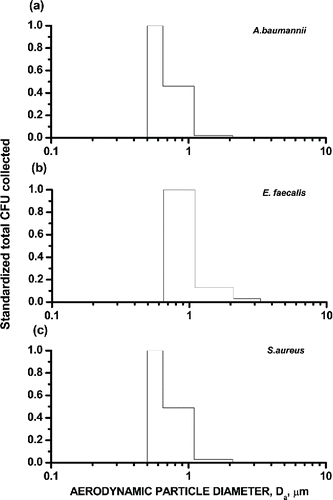Figures & data
Figure 1. The exterior (a, b), internal (c, d), and interior (e, f) layers of the surgical mask were individually coated with GS5 using a common spray bottle and then processed for SEM observation. Representative SEM images are shown of the filter structure of GS5-coated layers, given four sprays (approximately 1 mL) of 1% GS5 on the surface. The left figures (a, c, and e) were taken under a magnification of 150×. The white boxes in (a), (c), and (e) were then magnified by 1000× (b, d, and f), and arrows indicate that there was a white and opaque GS5 layer adhered to the filter layers of the mask.

Figure 2. Schematic diagram of the bioaerosol test system for (a) decontamination of settled bacterial particles (phase one study), and (b) decontamination of bacterial aerosols that remained on the mask surface, and the filtration performance test (phase two study). The distance from the surface of the test mask to the airflow inlet of the chamber is 60 cm in the phase one study and 30 cm in the phase two study.

Figure 3. The size distributions of the culturable aerosols of A. baumannii, E. faecalis, and S. aureus in the test chamber were measured by an Andersen 6-STG impactor. Each size distribution represents the mean of at least three trials.

Table 1. Phase two testing for the pre-decontamination efficacy of GS5-coated mask layers against the three challenge bioaerosols.
Table 2. Phase two testing for the filtration efficiency of the exterior layers of masks by different coating processes.
Table 3. Phase two testing for the filtration efficiency of the internal layers of masks with different coating processes.
Table 4. Phase two testing for the filtration efficiency of the interior layers of masks with different coating processes.
Table 5. The filtration performance of whole sterile water- and GS5-coated masks exposed to NaCl aerosol.
